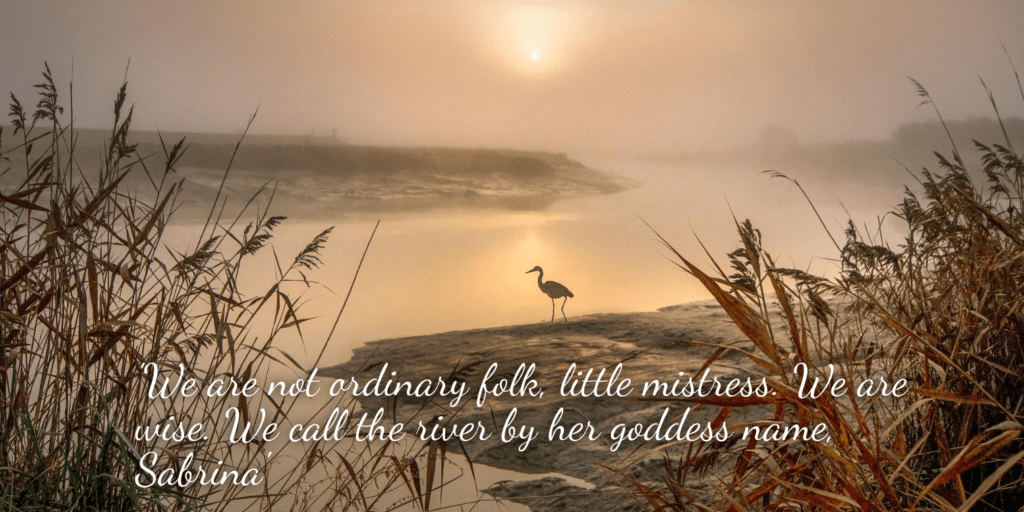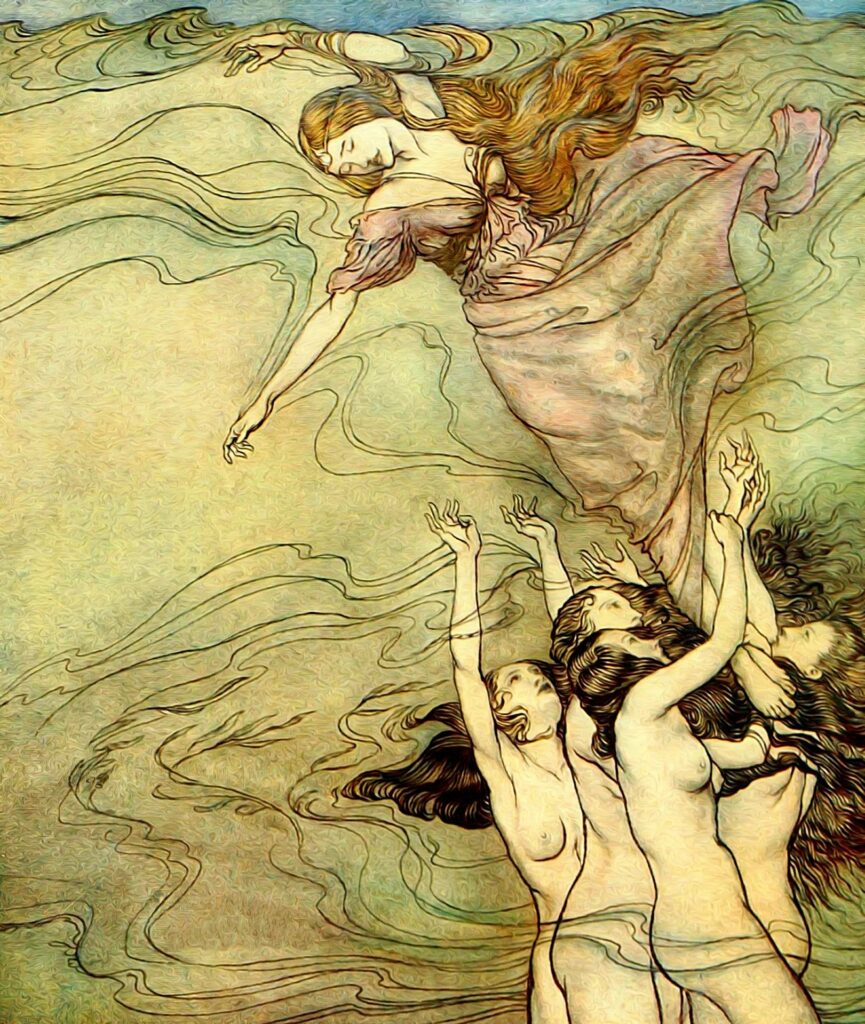Captive damsels, jealous wives, and river nymphs
Sabrina goddess? Most people living where I live know Sabrina was the Roman name for the River Severn, which for much of its length marks the boundary between Wales and England. On a prosaic level, Sabrina, anglicised to Severn, is the Roman translation of the Welsh Halfren which means border.
How very dull!
More romantically, we think of Sabrina as a goddess, which is the river’s character in my novel, River Witch.
So how did the name come about and who was Sabrina?

Here is the tale
Locrinus was a son of Brutus, the exiled Trojan who supposedly founded Britain. Locrinus was King of England, his two brothers kings of what we know of as Scotland and Wales. When Huns invade Scotland, good brother Locrinus hurries north to help his brother. They win against the Huns, but among the captives is a princess (or perhaps simply a girl) named Elstridis with whom Locrinus falls in love. All fine, except that Locrinus is promised to Gwendolen, the daughter of Big Daddy Brutus’ second-in-command, Corineus.
Still with me? All you need to know is that, as ever, the wrong people fall in love and there are obstacles in their path. In this case, a battle-axe wielding obstacle in the form of Corineus who forces Locrinus to marry Gwendolen.
True love strives to be with the loved one, however, and for seven years Locrinus keeps Elstridis in a secret underground dwelling, visiting her while pretending to be making offerings to the gods. They have a child, a daughter named Halbren. This tidy arrangement is upset when Corineus dies and Locrinus decides he can now safely leave Gwendolen and marry Elstridis.
But Gwendolen is her father’s daughter. Far from retiring, grieving, she raises an army in Cornwall and marches against her former husband. Locrinus is killed and Gwendolen decrees Elstridis and Halbren must die too. Both are drowned in the Severn.
After the event, Gwendolen declares the river should be known by the child’s name: Halbren (or Halfren), Sabrina in Latin and Severn in English. Her motivation for doing so differs in the stories. On the one hand, appeased and justice done in her eyes, Gwendolen acknowledges that perhaps drowning the innocent child was going too far and hence names the river after her. The alternative is that the name will serve as a lasting memorial to her husband’s infidelity. My money’s on the second.
Either way, Sabrina becomes the goddess of the river. This extract from Milton’s Comus, is a lyrical expression of what might have happened. There are shades of River Witch here.

“She, guiltless damsel, flying the mad pursuit
Of her enraged stepdame Guendolen,
Commended her fair innocence to the flood
That stayed her flight with his cross-flowing course.
The water-nymphs, that in the bottom played,
Held up their pearled wrists, and took her in,
Bearing her straight to aged Nereus’ hall;
Who, piteous of her woes, reared her lank head,
And gave her to his daughters to imbathe
In nectared lavers strewed with asphodel,
And through the porch and inlet of every sense
Dropped in ambrosial oils, till she revived,
And underwent a quick immortal change,
Made Goddess of the river …”
For a fascinating read about the river’s history and associated lore, take a look at this article. I was particularly interested in the story about the hermits of Blackstone Rock near Bewdly who rescued infants from the river. When you read River Witch, you’ll understand my interest, yet I wasn’t aware of this tale when I wrote the book. Obviously I was channelling Sabrina at the time. Her magic has worked too, given the reviews from readers who love Hester and her tale..